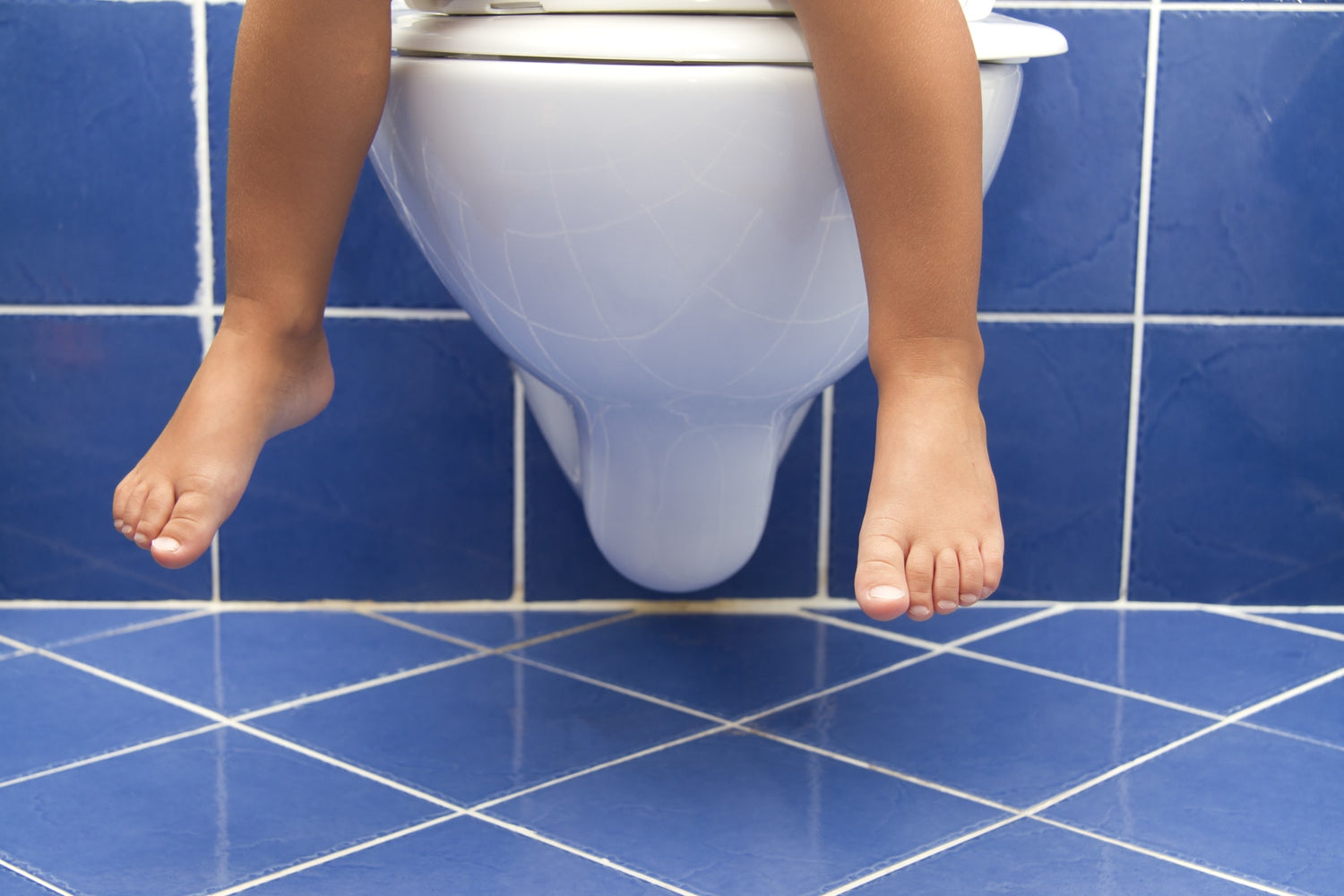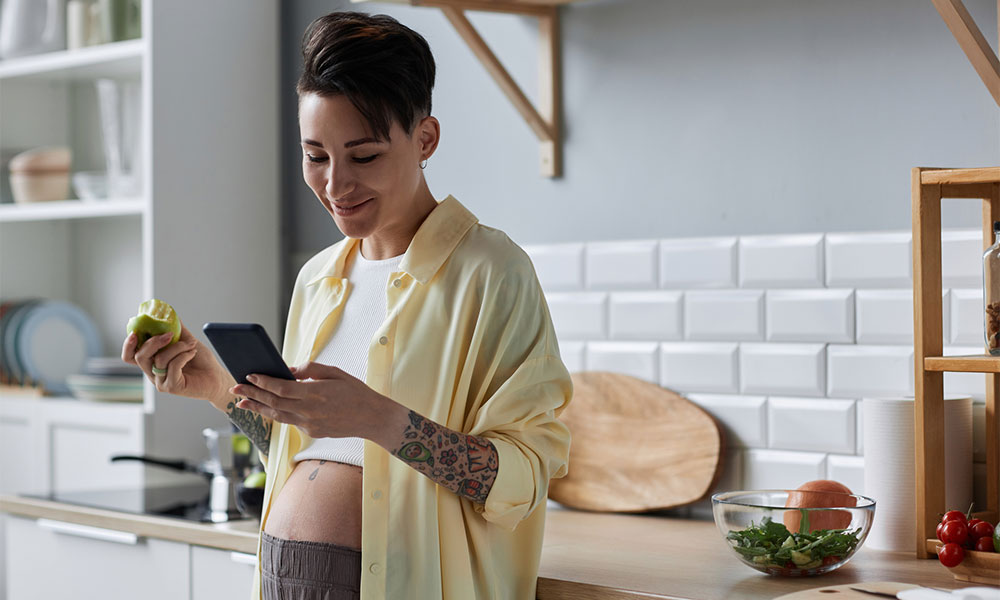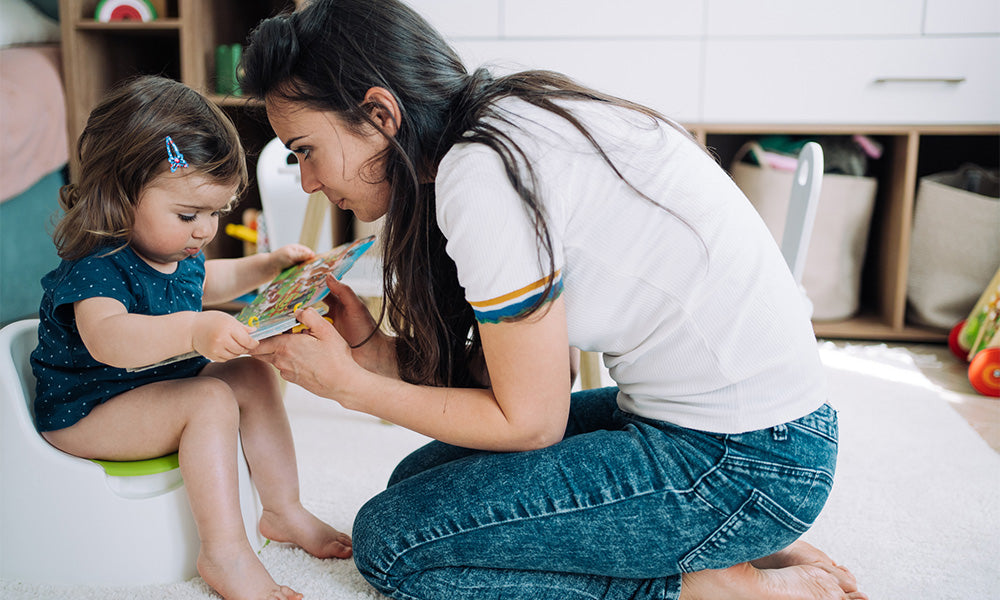Our son was barely two years old when we enrolled him in a daycare in China. We were two western parents raising a child abroad, and we liked to believe we were doing a pretty good job at it. We took pride in the belief that our boy was ahead of the curve.
But when he showed up with a diaper under his pants, the teachers reacted like we’d brought him in covered in bruises.
“No good,” the head of the daycare said with tsk and a disappointed shake of her head. “We will fix this.”
Our child had only been alive for twenty-four months, but the people here thought it was embarrassing that he wasn’t yet fully potty-trained. To us, it seemed ridiculous (and a little insulting) that this woman thought she could have him running around dry and diaperless within a week – but she did it.
(We were prepared with a Summer by Ingenuity My Size Potty Pro at home, which has the look and feel of a real adult toilet, in toddler size.)
About seven days later, we were done with diapers. It was incredible – but, by Chinese standards, we were actually behind the curve.
Chinese parents potty-train their children without ever putting a single diaper on their bottoms, and the results are astonishing:
- Children are potty-trained in their first 12 to 20 months
- They never have to clean a dirty diaper
- They never have to treat diaper rash
- They save all that money we waste on diapers
- They save all that space in landfills that we fill with them
- They never hear their children cry about being wrapped up in a soiled diaper
Chinese potty-training is different, but it actually works – and it’s worth every parent’s time to borrow a few of its ideas.
Here’s how it works:
Start at birth.
In Europe and America, people endlessly debate when a child is “potty-ready” – but almost everywhere else in the world, the answer’s simple: they start about a few days after the baby is born.
I’m not saying science is wrong – it’s a fact that children are not biologically capable of controlling their bladders. These Chinese newborns do not politely excuse themselves while they step into the powder room.
They are, however, practicing. And that’s the real goal: ingraining good potty-habits from the start.
In case you’re worried, there is absolutely no danger in starting young. Studies have shown that children potty-trained at birth have absolutely no negative side-effects on their behavior.
Waiting too long, though, is dangerous. Other studies show that children who start potty-training late are more prone to accidents and bed-wetting. When we let kids spend their first three years relieving themselves whenever and wherever they want to, it becomes a habit – and breaking that habit is a lot of the reason it’s so hard to get those kids potty-trained when we do start.
Watch for signals.
The goal, at the start, is to get your children into the habit of going to the toilet whenever they need it. At this point, they’re not really aware enough to know it themselves – so it’ll be your job to keep an eye on what your baby’s feeling.
Babies will usually give some indication that they need the toilet before they start using it. You might see your baby squirming, or start to make a struggling face. His or her breathing might change. If it’s a boy, he might start filling up.
Whatever the cue, as soon as you see it happening, your job will be to bring your baby over to the nearest bathroom as quickly as you can. It’s not easy, but it’s setting up a habit in your baby’s life. Your baby will be growing up used to the idea that he or she should react when it’s time to go -- instead of just sitting there letting it happen.
Truth be told, you probably won’t always make it in time. Which brings us to one more tip – most Chinese homes don’t have carpet. If you’re going to give this a serious try, you’ll probably regret not pulling those out the first time you don’t make it.
Hold your baby over the toilet.
When they make it to the bathroom, Chinese parents will hold their children over the toilet while they do their business.
That is – when they make it to the bathroom. The truth is, babies have incredibly tiny bladders, and you’re probably not going to have time to get your child to the toilet each time. That’s why Chinese parents often have a practice potty or, when that’s not close enough by, even use basins around the house. Anything they can hold a child over to keep it from making a mess.
When it’s time to go, hold your baby over your potty. Have your child look at, reach for and grab the potty before starting to make the link between toilets and relieving yourself that much clearer.
Whistle.
From nearly the moment our child was born, he’s heard somebody whistle a high F# every time he’s gone pee. It’s something we did from his birth and that, early on, seemed just like a weird tradition our neighbors had goaded us into following – but when he got a bit older, the effects were incredible. Our boy might sit on the toilet complaining that he doesn’t have to go, but the second we whistle, it comes out of him like pressing a button on a machine.
We were taught to whistle – but other people use other sounds. Most people seem to shush or to hiss. It doesn’t really matter. You could probably sing “La Cucaracha” and it would still work.
The point here is to create a Pavlovian connection between a sound and going to the bathroom. You’re sort of programming your child to go to the bathroom on command – which is going to help a lot with the next step.
Put your baby on the potty regularly.
Realistically, you’re not going to be able to spend twenty-fours of each day staring at your child’s face, watching for the slightest sign of a potty emergency – nor should you. You want to get your child into the habit of heading to the bathroom before the situation gets desperate – and so you’ll want to bring sit him or her on the potty once every hour or so.
This is one thing that we didn’t do well at the start. We’d picked up a few of these tricks from people in our community, but, as Western parents, we didn’t worry too much if he relieved himself in his diaper every now and then.
It really does, though, make all the difference. The daycare we sent him to made this a ritual. The whole class would head to the bathroom once every hour, and even sing a song to commemorate the occasion. Once our son had the habit, his visits to the bathroom stopped being races against the clock, and then we started seeing real results.
Make it work for your lifestyle.
If you follow these first five steps, you can potty-train a child in under two years without any problems – and it will work. Or, at least, it’ll work so long as you’re willing to never leave your home again.
If I’ve been painting too rosy a picture here, it’s because I’ve been saving the hard truths for now. This isn’t an easy process. It’s time-consuming – newborns typically have to pee 20 times each day, so you’ll be spending a lot of your time dangling your child over a toilet.
This method works for Chinese people because their lifestyles are different from ours. Most Chinese parents live with a set of grandparents, and so they have a set of extra hands constantly on watch to reduce the load.
You probably won’t have that luxury – but you can still make it work. Some experiments have been done starting children at six months old and still had great results.
For our family, we did this clumsily – we worked some of these steps in at birth, and didn’t learn about others until later. Even with our patchwork parenting, we still got some major advantages by incorporating these ideas into our potty-training regiment, and still had our child mostly trained by his second birthday.
Go outside and have fun.
Of course, when you go outside, this all gets a lot trickier.
For Chinese parents, going outside is easy. Their children wear pants with holes cut in the crotch and let it all hang out. When a child has to pee, the parents just dangle them over the nearest trash can and let them do it – and it works, because in China the sight of a half-naked baby peeing into a trash can is as normal as normal can be.
Western society is a bit different. If you try that here, you’ll get more than a few stares, and might get a few concerned phone calls as well. Until we have a major societal change, most parents probably won’t be willing to take a pair of scissors to their kids’ pants before heading outdoors.
Still, there are ways to make it work. In our case, we simply let our boy wear diapers outside when he was young – then, once he was two, just sent him out with underwear and pants and sent him to the bathroom every chance we could.
You might go further. You might not go as far. Perhaps all of this still seem a bit too odd for you to try – and if so, you’re not alone. Even in China, this is starting to change. As the country gets wealthier, a growing number of people are turning to diapers, buying into the belief that whatever comes from the West is best.
But the truth is, there are some things other cultures do better than we do – and there’s a lot of evidence that potty-training is one of them.
Do whatever works for you – but working a few Chinese ideas into your potty-training regimen just might make the process a whole lot easier.



